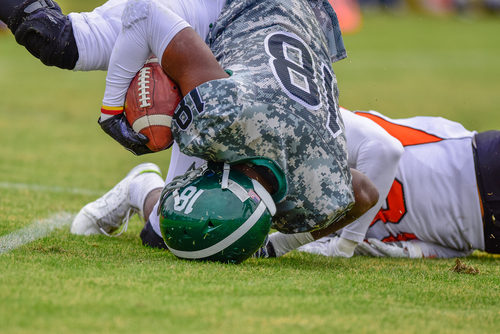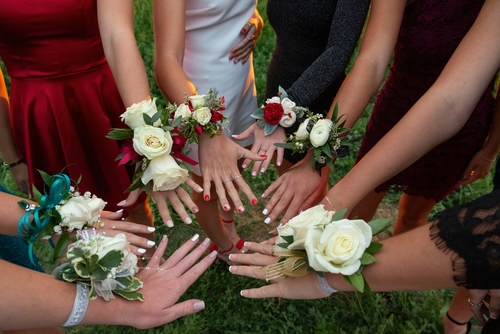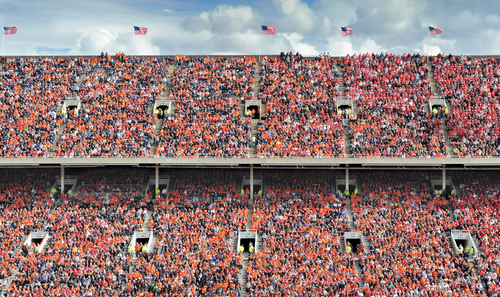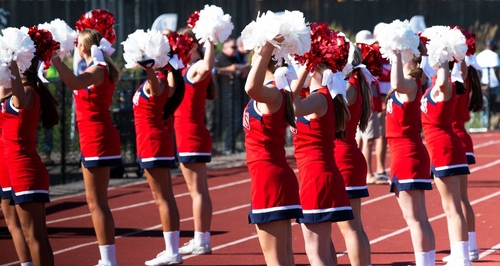If you’re new to the United States, you may hear friends, coworkers, or classmates talking about “homecoming.” This popular American tradition is a significant event, especially in high schools and colleges. Understanding what homecoming is can help you feel more connected to your new community and its cultural events.
This guide will explain the meaning of homecoming, its common traditions, and what makes it a memorable experience for so many Americans. By the end, you’ll have a clear idea of what to expect and how you can participate.
What is the point of homecoming?
Homecoming is an annual tradition in the United States where high schools and colleges welcome back former students, or alumni. The name “homecoming” comes from the act of these alumni “coming home” to their old school.
The event usually takes place in the fall, from late September to October. It’s a week-long celebration that brings together current students, alumni, faculty, and the local community. The festivities are meant to celebrate school spirit and pride. The week typically leads up to a central event, like a big football game, followed by a formal dance.
While the core idea is to welcome back alumni, homecoming has evolved into a major social event for current students, filled with activities, parades, and opportunities to make lasting memories.

High School Homecoming Traditions
In high school, homecoming is a major social highlight of the school year. For many students, it’s their first experience with a formal dance and a week full of school-spirited activities. Here are some of the most common traditions.
Spirit Week
To build excitement for the main events, high schools host a “spirit week.” Each day has a different theme, and students and staff dress up accordingly. It’s a fun, lighthearted way to show school pride.
Common spirit week themes include:
- Pajama Day: Students come to school in their comfiest sleepwear.
- Decades Day: Everyone dresses in fashion from a specific decade, like the 80s or 90s.
- Tacky Tourist Day: Students wear silly vacation outfits.
- School Colors Day: Everyone wears the school’s official colors to show unity.
The Homecoming Game
The spirit week usually culminates in a big home football game, often against a rival school. The game is a major community event, drawing large crowds of students, parents, teachers, and alumni. The atmosphere is energetic, with the marching band, cheerleaders, and dance team performing to keep spirits high.
The Pep Rally
On the day of the game, the school holds a pep rally to get everyone excited. A pep rally is an assembly filled with loud music, performances by the cheerleading and dance squads, and spirited games. It’s a final burst of school pride before the main event.
The Homecoming Court and Dance
One of the most well-known traditions is the election of a homecoming court. Students vote for a group of their peers to represent their class, with a senior “King” and “Queen” crowned as the heads of the court. The crowning often happens during halftime at the football game or at the dance itself.
The week’s celebrations end with the homecoming dance. This is usually a semi-formal event held in the school gymnasium or at a rented venue. For many students, getting ready for the dance—finding a dress or suit, and maybe going with a date or a group of friends—is a big part of the experience.

College Homecoming Traditions
College homecoming shares many similarities with its high school counterpart but on a much larger scale. The focus is more heavily on celebrating alumni and fundraising for the university.
Alumni Reunions
For colleges, homecoming is a major opportunity to engage with their alumni. Universities host class reunions, alumni-specific tailgates, and networking events. These gatherings encourage former students to reconnect with old friends and professors. They also serve as important fundraisers, as universities often ask alumni for donations to support scholarships and campus projects.
Tailgate Parties
Before the big football game, students and alumni gather in the stadium’s parking lot for tailgate parties. A tailgate involves grilling food, playing music, and socializing right out of the back of a car (the “tailgate”). It’s a festive and social pre-game ritual that is central to the American college football experience.
Homecoming Parades
Many universities host a large parade that travels through campus or the surrounding town. These parades feature elaborate floats created by student organizations, fraternities, sororities, and academic departments. The marching band, cheerleaders, and members of the homecoming court also participate, creating a vibrant display of school pride for the whole community to enjoy.
Campus-Wide Events
Beyond the game and parade, colleges often organize a full week of activities. These can include concerts, bonfires, talent shows, and community service projects. Each university has its own unique traditions, but the goal is always to foster a strong sense of community and pride among students, past and present.

What to Expect at a Homecoming
Whether you attend a high school or college homecoming, you can expect a week filled with energy, school spirit, and community. It’s a time when people come together to celebrate their shared connection to an institution.
If you are a parent with a child in high school, homecoming can be a fun way to get involved in their school community. For those new to the U.S., attending a homecoming event can be a great cultural experience and a way to understand an important part of American life.
What Similarities Exist Between Homecoming Traditions and Thanksgiving Celebrations?
Homecoming traditions and Thanksgiving celebrations share a spirit of togetherness and gratitude. Both events bring families and communities together, fostering a sense of belonging. Embracing thanksgiving traditions to help you feel welcome enhances the atmosphere, allowing participants to reconnect and create lasting memories through shared meals, stories, and festive activities.
Frequently Asked Questions
Do you need a date for homecoming?
No, you do not need a date to attend the homecoming dance. Many students go with a group of friends or by themselves. The focus is on having a good time and celebrating with your school community.
What is a “promposal” vs. a “hoco-posal”?
A “promposal” is an elaborate way of asking someone to the prom, another formal high school dance held in the spring. A “hoco-posal” is the same concept but for the homecoming dance. These often involve creative signs, gifts, or scavenger hunts.
Can alumni attend a high school homecoming dance?
Generally, high school homecoming dances are for current students only. Alumni are encouraged to attend the football game and parade, but the dance is typically reserved for the students enrolled at the school.
